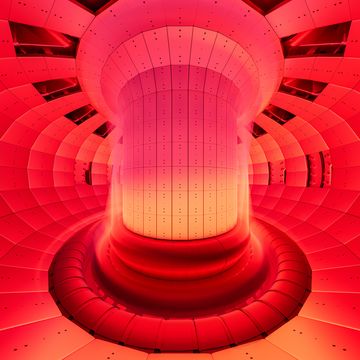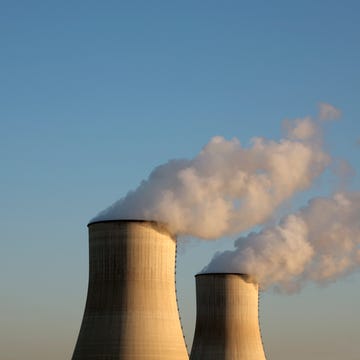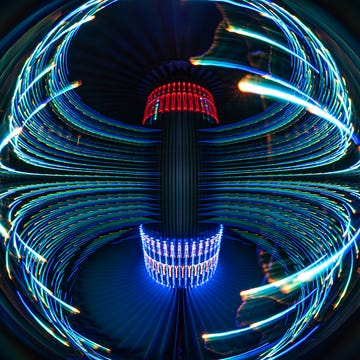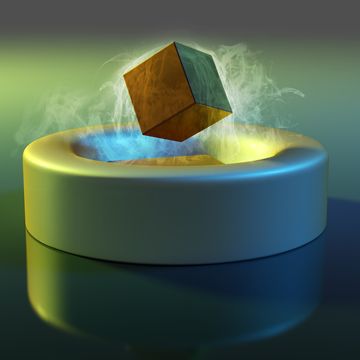- Candidatus Methanoperedens, a type of bacteria that lives in freshwater, turns methane gas into electricity.
- Today’s methane-powered biogas generators convert no more than 50 percent of the gas into power.
- As for the microbes? Scientists say they can already turn 31 percent of the methane into electricity, and there’s still room for improvement.
Small bacteria found in fertilizer-polluted freshwater ditches, streams, and lakes are like little power generators, according to new research from Radboud University in the Netherlands. There, scientists found that the bacteria Candidatus Methanoperedens uses nitrate to help break down methane. From there, the microbes “donate” electrons, creating a mini methane-eating power cycle that allows them to act as teensy batteries while naturally producing electricity.
“This could be very useful for the energy sector,” Cornelia Welte, a microbiologist and co-author of the Radboud study, says in a press release. The published work first appeared this month in Frontiers in Microbiology.
🔋 Don’t miss any of our supercharged energy stories. Join Pop Mech Pro.
Current biogas installations—cow manure, anyone?—feature heated methane, burnt in order to drive a turbine and generate power. Since methane traps heat within the atmosphere, folks are anxious to harness it for something beneficial; but so far, methane hasn’t proven a super-efficient path toward energy conversion. In those burn-off setups, no more than 50 percent of the biogas converts to power. Welte’s team wants to evaluate whether they can do it better with microorganisms.
Radboud microbiologists had already found they could generate power using an ammonium-eating bacteria, believing this methane-consuming bacteria could follow suit. “The process in these bacteria is basically the same,” Heleen Ouboter, another Radboud microbiologist involved in the work, says in the release.
Microbes like bacteria are able to thrive in oxygen-depleted locations due to their reliance on nitrogen and methane. These anaerobic methanotrophic archaea oxidize the methane and even donate electrons directly to nearby species through a chain of electrochemical reactions. When researchers discovered this trick, they saw that the microbes produced voltage in the process. That’s when the lab-controlled environment came into play.
In the Radboud experiment, researchers grew the microbes with a heavy dose of methane—and without much oxygen. By placing a metal anode at zero voltage near the microbes, they primed the bacteria to donate to the cause of their choice. The researchers measured the bacteria’s extracellular electron transfer as current.
“We created a kind of battery with two terminals, where one of these is a biological terminal and the other one is a chemical terminal,” Ouboter says. “We grow the bacteria on one of the electrodes, to which the bacteria donate electrons resulting from the conversion of methane.”
As the methane converted and created spikes up to 274 milliamps per square centimeter (about a quarter of an amp, or enough electrical flow to power a 20-watt light bulb), the researchers claimed that 31 percent of methane energy was turned into electricity—not a poor first attempt in the world of methane conversions. But Welte believes they can further improve the system.
The Radboud team knows that improving those efficiencies also means working with these living microbes, creating what amount to methane-powered living battery farms. The ability of Candidatus Methanoperedens to thrive in unwelcome conditions opens at least the possibility of creating living methane-eating batteries.
Tim Newcomb is a journalist based in the Pacific Northwest. He covers stadiums, sneakers, gear, infrastructure, and more for a variety of publications, including Popular Mechanics. His favorite interviews have included sit-downs with Roger Federer in Switzerland, Kobe Bryant in Los Angeles, and Tinker Hatfield in Portland.













